The debate between mechanical and electronic shifting for bikes is ongoing among cycling enthusiasts. For a long time, weighing in on this topic felt redundant, as personal preference seemed to dictate the choice more than objective advantages. However, as Electronic Bike components become increasingly prevalent, it’s essential to revisit the core reasons behind this shift and understand why more riders are embracing electronic systems.
Personally, I’ve firmly landed on the side of electronic shifting. When faced with the decision to build a gravel bike equipped with either high-end mechanical or entry-level electronic shifting, I opted for SRAM Apex AXS. Despite the potential weight penalty, the consistent performance and reduced maintenance of electronic shifting were more appealing. But why is this the case, especially when many respected cyclists still favor mechanical systems?
To understand my preference, and perhaps resonate with riders who feel similarly, it’s crucial to explore the underlying reasons. If you’re already an electronic shifting enthusiast, this article might validate your choice. If you’re undecided, consider this a perspective that often goes unmentioned. And if you’re a staunch supporter of mechanical shifting, I hope to offer a respectful counterpoint, explaining why, for some of us, electronic is simply a better fit.
It’s also important to note that a contrasting viewpoint, advocating for mechanical shifting, will be presented at the end of this discussion to provide a balanced perspective.
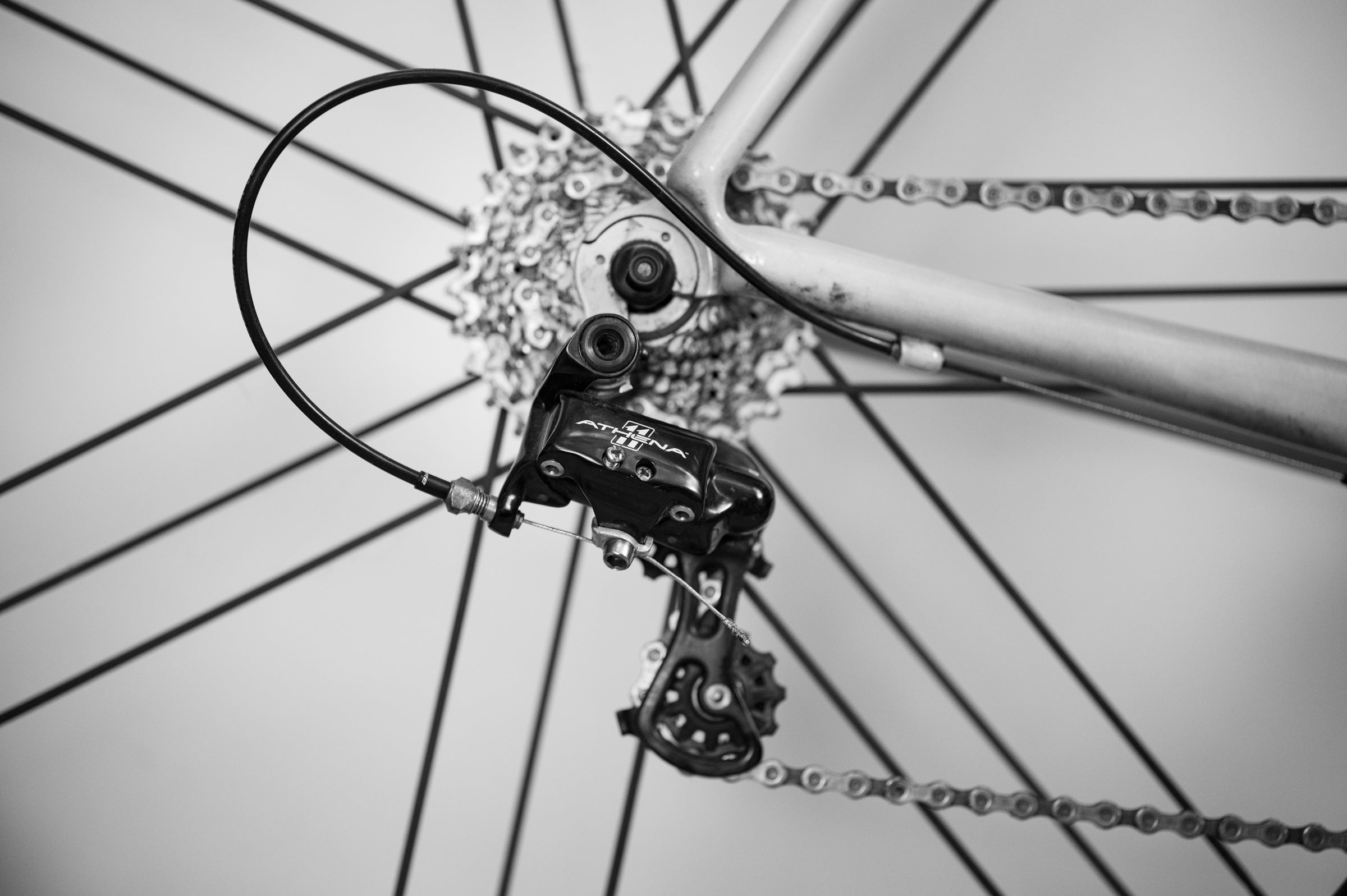 Campagnolo Athena 11-speed mechanical groupset
Campagnolo Athena 11-speed mechanical groupset
My Bike as a Tool for Adventure and Performance
This might sound utilitarian, but it reflects my core approach to cycling. My bike isn’t merely a hobby; it’s a tool that enables adventure, personal growth, connection with friends, and even serves as a form of therapy. It’s the instrument I use to maximize fulfilling experiences and achieve personal goals, whether that’s conquering a challenging climb, exploring new trails, or simply enjoying the freedom of the open road. The bike itself isn’t the end goal, but rather the means to a more enriching life.
Consequently, I have little patience for bike maintenance. Washing my bike feels like a chore, and tinkering with components is time I’d rather spend riding. My available time is precious, squeezed between work and family commitments. When I ride, it’s with intention and purpose. Quick coffee stops or post-ride beers are rare; my focus is on maximizing the ride itself. I prefer to enjoy coffee and social time at home with family. Therefore, I need my bike to perform flawlessly every time I use it, without demanding constant attention.
Consider a wrench – would you intentionally choose one that requires regular upkeep if a maintenance-free, superior alternative existed? If a tool that needed less maintenance also offered better performance, the choice seems obvious. Why dedicate time to unnecessary maintenance when you could be riding? For me, electronic shifting embodies this maintenance-free, high-performance ideal.
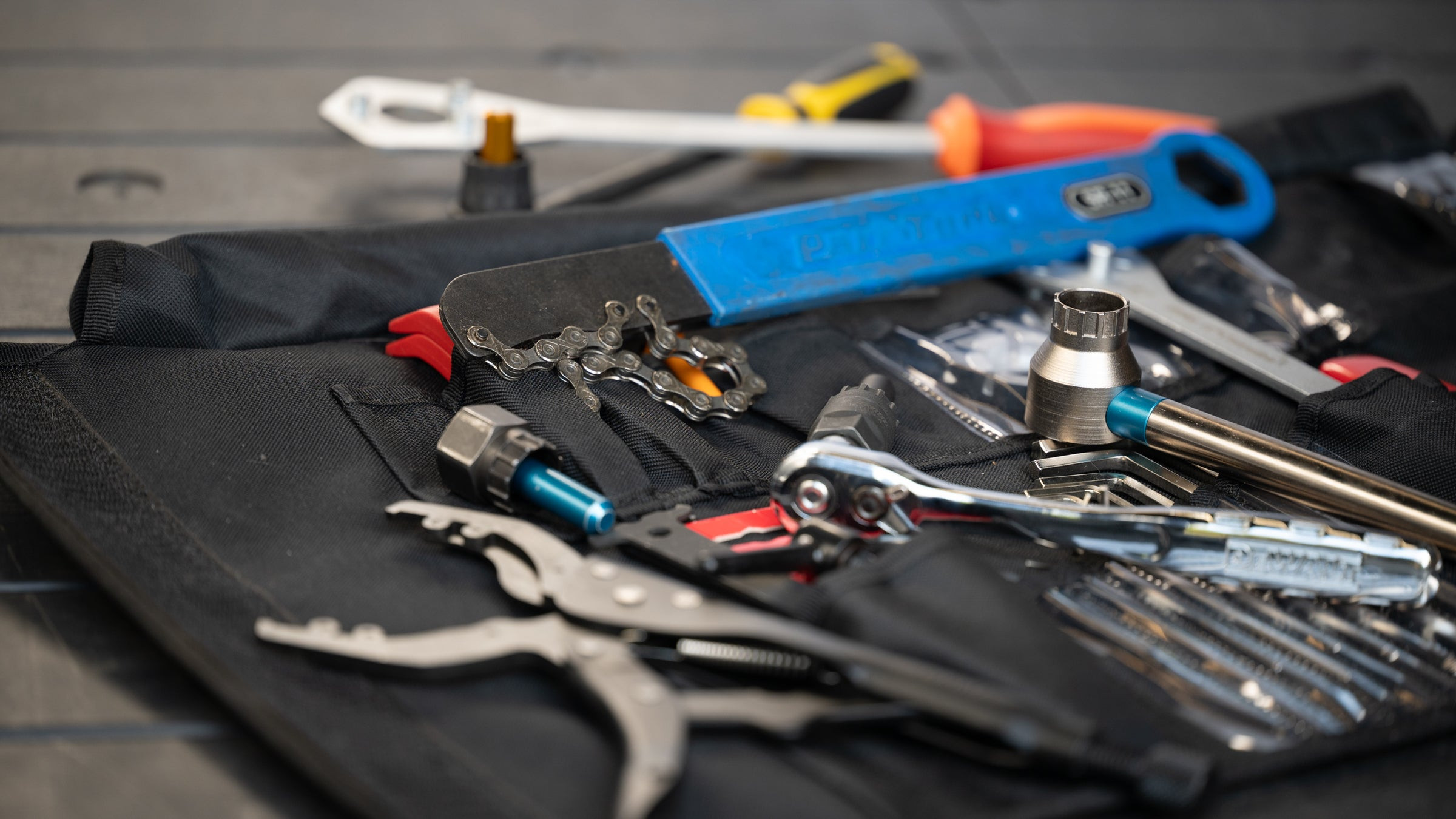 Cassette tools group shot
Cassette tools group shot
The Underrated Drawbacks of Mechanical Shifting
Many mechanical shifting proponents might argue that I simply haven’t experienced truly refined mechanical systems. However, I assure you, I have. Having cycled for years, including time spent with Campagnolo groupsets, I understand the appeal. There’s a tactile satisfaction in manually actuating a shift, feeling the cable engage, and hearing the precise click as gears change. This mechanical engagement can be enjoyable, but its charm is often short-lived, especially for frequent riders.
For occasional cyclists in ideal conditions, mechanical shifting might remain consistently good for longer periods. But for those of us who ride frequently, across varied terrains and weather conditions, the reality is different. Cables wear, Shimano levers are notorious for fraying cable heads, and internal cable routing adds complexity and friction. Several times a year, shifting performance inevitably degrades, requiring troubleshooting and adjustments.
In my younger days, I’d meticulously try to diagnose the problem. Limit screw adjustments? Cable tension? Cable stretch? But as time became a more valuable commodity, and perhaps with a touch of gained wisdom, I realized that constantly chasing shifting gremlins was inefficient. Replacing cables became the simpler solution. When relying on a single bike year-round, cable replacements occurred roughly three times annually.
While perhaps not strictly necessary, this frequency stemmed from my desire for optimal shifting. I demand smooth, silent, and instantaneous gear changes, requiring no more than a single lever push for up or downshifts. For achieving this level of consistent, high-performance shifting, electronic systems are undeniably superior.
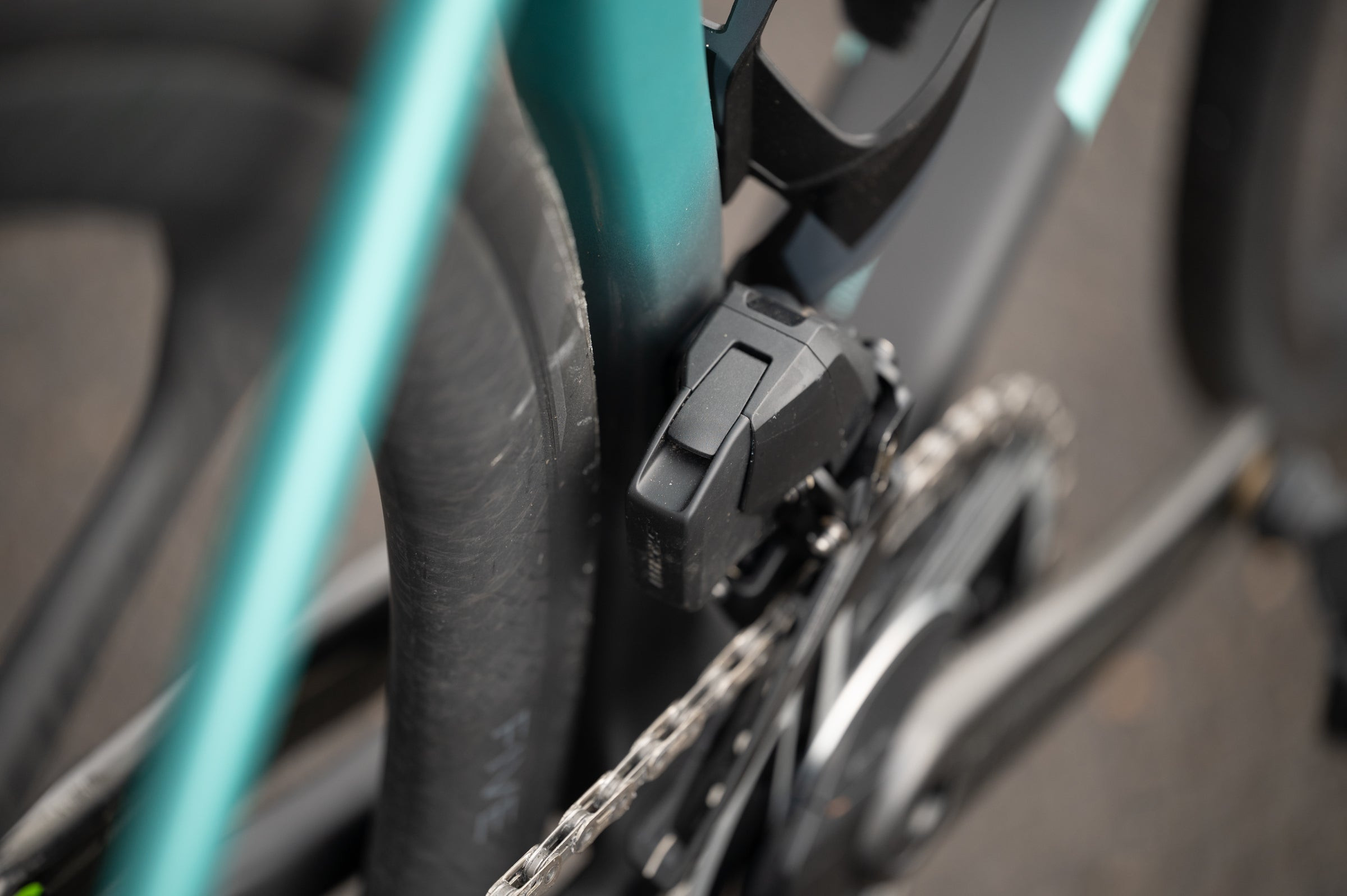 SRAM Red front derailleur with battery
SRAM Red front derailleur with battery
Beyond Meditation: Prioritizing Riding Time
The core of my preference lies in the value I place on riding versus maintenance. Electronic shifting might be perceived as lacking soul, and it’s true that mechanical shifting demands a level of engagement that electronic systems don’t. Mechanical systems involve hands-on problem-solving, and the satisfaction of a perfectly tuned drivetrain is undeniable. This process can be meditative for some, a form of focused engagement that is rewarding in itself.
However, for me, bike maintenance is not meditative; it’s an intrusion. Every minute spent wrenching is a minute stolen from riding. This time isn’t free; it’s a conscious trade-off against family time, riding time, or other valued activities.
Discussing this with a riding companion on a long ride, he questioned, “What do you do instead of bike maintenance for that meditative time?” While perhaps tangential, it’s a valid point, and I believe I still possess a soul, even if I prefer electronic shifting.
My meditative moments occur primarily while riding. This is why I resent trading that peaceful, focused riding time for bike repairs. When I seek a different form of meditative activity off the bike, I turn to art. Creative pursuits offer a similar focused engagement and relaxation, providing a fulfilling alternative during recovery time, when family and other commitments allow.
Bike maintenance, to me, is akin to household chores – necessary at times, but something I’d rather avoid.
Addressing Battery Concerns in Electronic Bike Groupsets
Even those who understand the desire to minimize bike maintenance often raise the issue of batteries. The argument that electronic shifting is unreliable due to battery dependency still surfaces, but I find it increasingly unfounded. Electronic shifting is remarkably dependable, consistently delivering the same high level of shifting precision. While mechanical shifting, in a sense, also rarely “fails” catastrophically (cable breakage is uncommon), batteries do require management.
My frequent riding actually minimizes battery-related issues. Regular use means batteries cycle predictably, from full charge to depletion. Modern head units provide ample low-battery warnings, typically offering at least another hundred miles of riding range before critical depletion. The situation is slightly more nuanced for bikes used less frequently.
I’ll admit to occasionally encountering a depleted battery when intending to ride. This usually happens in the spring after a bike has sat unused over winter, a scenario that clashes with my “ready-to-ride” philosophy. However, this was a lesson learned, prompting me to be more proactive.
Currently, I maintain battery awareness by periodically checking battery levels via the associated app. Firmware updates are also more readily addressed with regular checks. Sometimes, I simply preemptively charge batteries without checking, ensuring they are always ready.
If this level of battery management seems burdensome, it doesn’t negate the benefits of electronic shifting. It simply highlights the need to choose a system that aligns with your habits. SRAM AXS, with its easily swappable batteries, offers a convenient solution. Shimano batteries generally offer longer life, but require bike-mounted charging, sometimes necessitating pre-planning, although USB battery packs simplify this.
For riders who want to eliminate battery anxiety entirely, SRAM’s swappable battery system is ideal. Carrying a spare battery, even in a flat repair kit, offers complete peace of mind. And in a 2x system, swapping the less-used front derailleur battery to the rear derailleur can provide emergency power to get you home.
 SRAM Apex AXS electronic groupset
SRAM Apex AXS electronic groupset
Debunking the “Forced Electronic Shifting” Myth in the Bike Industry
The notion that the bike industry is somehow forcing electronic shifting on consumers seems far-fetched. However, it’s a perspective worth addressing.
Market share and bike purchasing trends suggest a growing preference for electronic shifting, and it’s unlikely this is solely due to industry coercion. The alternative – that bike brands are ignoring consumer preference for mechanical shifting and actively making it harder to purchase – defies basic business logic.
Bike brands, ideally, operate as profitable businesses, striving to understand and meet customer demand. Creating products that customers don’t want is a recipe for failure.
The argument that marketing is solely responsible for the rise of electronic shifting is more plausible. Marketing undoubtedly plays a role in creating demand, and bike brands actively promote electronic systems. However, to assume that no one genuinely prefers electronic shifting due to marketing influence is to underestimate consumer agency. It implies that riders are easily swayed and incapable of forming independent preferences.
I, and many others, prefer electronic shifting for reasons beyond marketing. Personal experience, performance benefits, and convenience are all valid drivers. While some riders prefer mechanical systems, dismissing electronic preference as mere marketing manipulation is inaccurate.
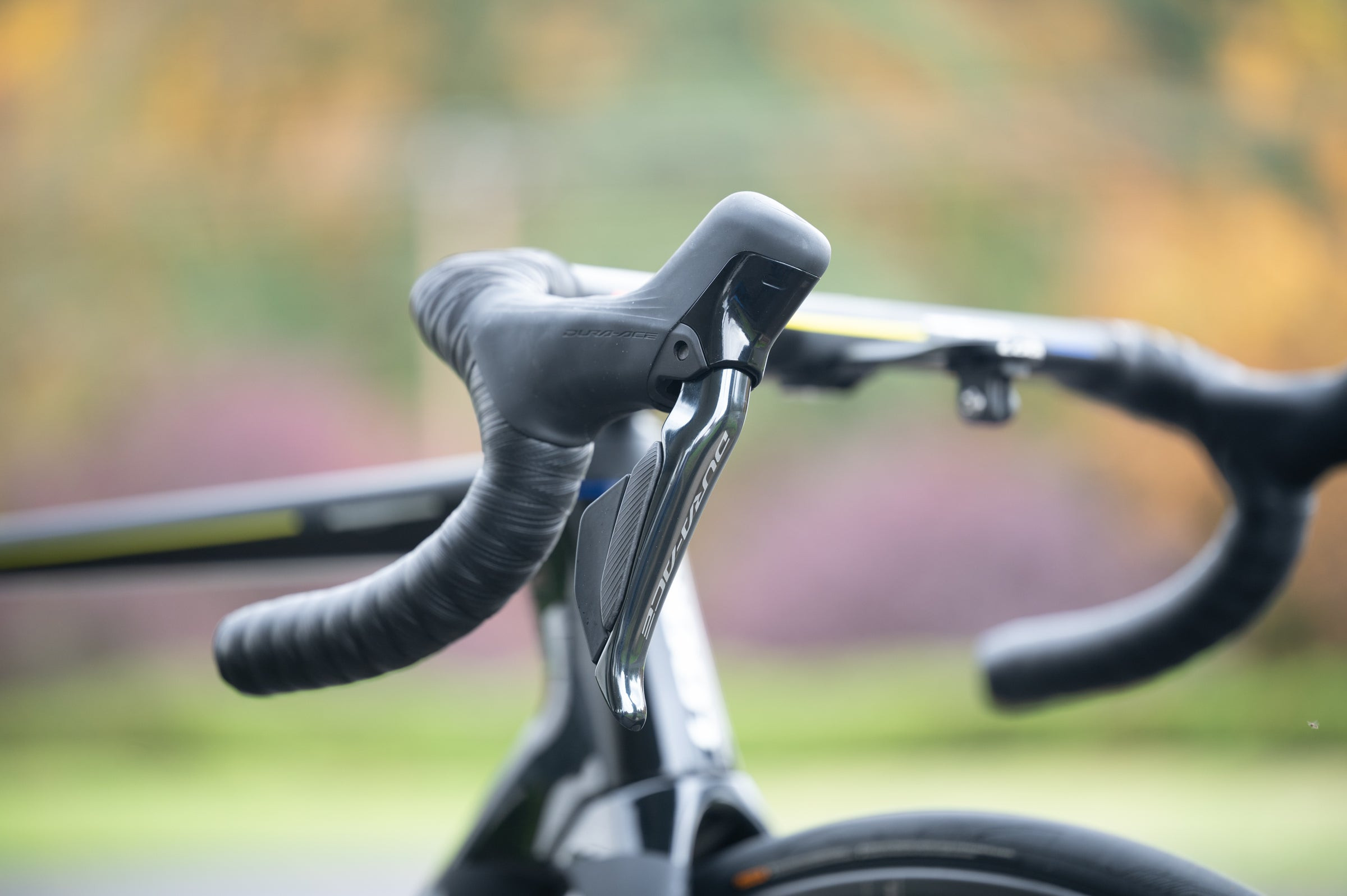 Shimano Dura-Ace levers
Shimano Dura-Ace levers
The Price of Progress: Understanding Electronic Shifting Costs
Electronic shifting is undeniably more expensive than mechanical counterparts. This cost factor is intertwined with the marketing discussion, but also reflects the inherent value of innovation. Mechanical shifting is a mature technology, and if it were the sole option, prices would likely be lower due to established manufacturing processes and market saturation. However, brands seeking to innovate and offer performance improvements must invest in research and development.
Electronic shifting represented a significant innovation, offering enhanced reliability, improved shifting performance, and reduced rider effort. This innovation comes at a price, reflecting the development costs and the performance benefits offered. Currently, electronic shifting prices are becoming more competitive, and future innovation at the high end seems directed towards increasing gear counts.
The argument that more gears or electronic shifting are unnecessary is valid, as is the concern that electronic shifting remains financially out of reach for some. However, the solution isn’t to stifle innovation, but to encourage the development of more affordable options within both electronic and mechanical categories. It’s likely that future cost reductions will be more readily achieved in electronic systems due to ongoing technological advancements.
Technological progress historically follows this pattern: today’s mid-range components often surpass yesterday’s top-tier offerings. Lower-priced options exist within product lineups, and the used market provides further accessibility.
Interestingly, mechanical shifting might eventually become more expensive as demand shifts and production scales decrease. While not yet the case, boutique brands may become the primary providers of mechanical systems in the future. For now, major manufacturers like Shimano and SRAM still offer high-end mechanical options, and Campagnolo maintains a diverse mechanical groupset lineup, including Super Record rim brake systems.
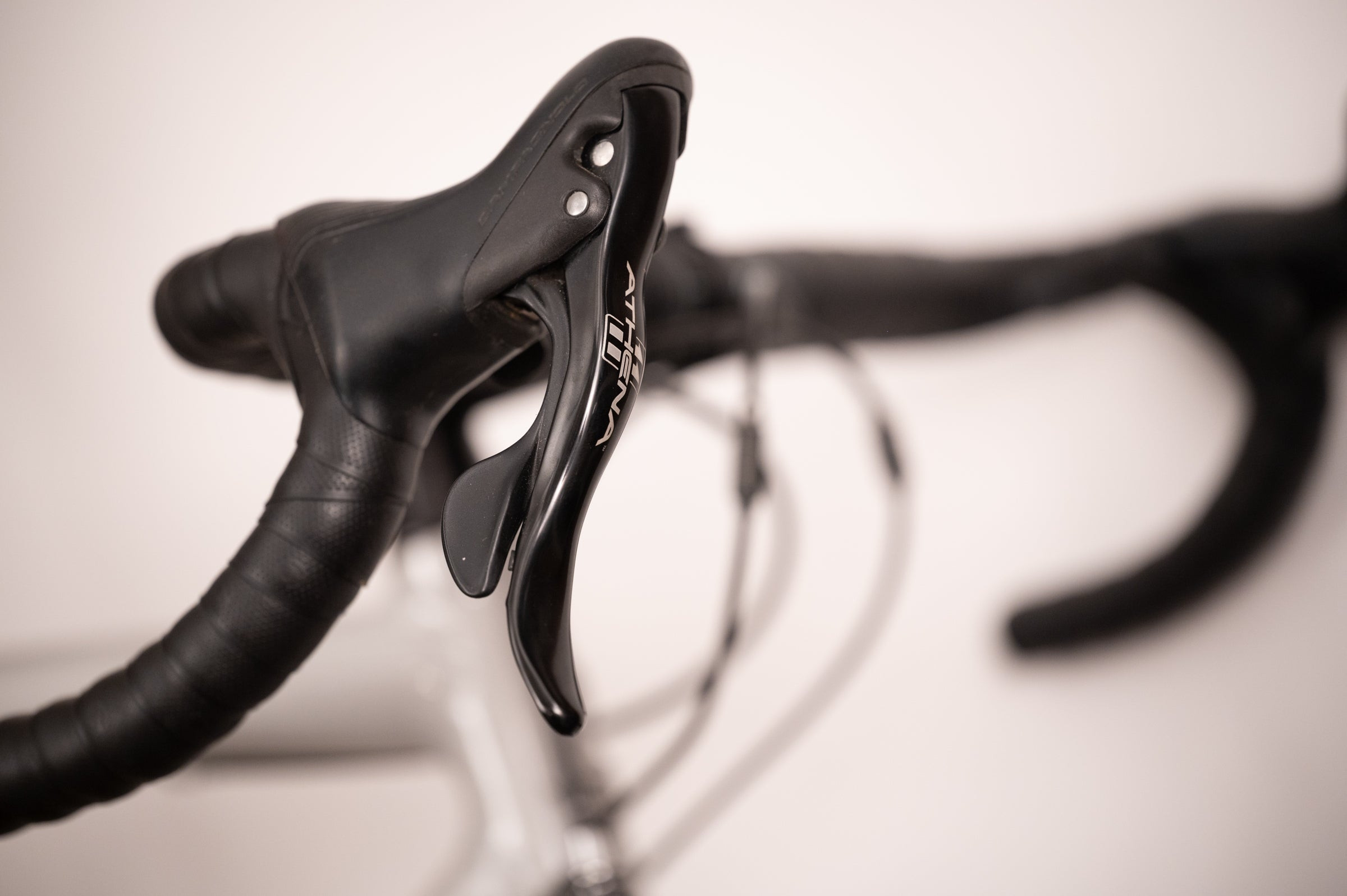 Campagnolo Athena 11-speed mechanical groupset
Campagnolo Athena 11-speed mechanical groupset
Personal Choice: Embrace Your Shifting Preference
Ultimately, the choice between electronic and mechanical shifting is a matter of personal preference. There’s no universally “right” or “wrong” answer. My aim isn’t to convert mechanical shifting enthusiasts, but to offer an alternative perspective and encourage open-mindedness. Dismissing electronic shifting proponents as somehow misguided for prioritizing riding time over bike maintenance is unfair. For me, electronic shifting is simply the better choice, enhancing my riding experience and minimizing distractions. This preference is based on personal priorities, not industry manipulation.
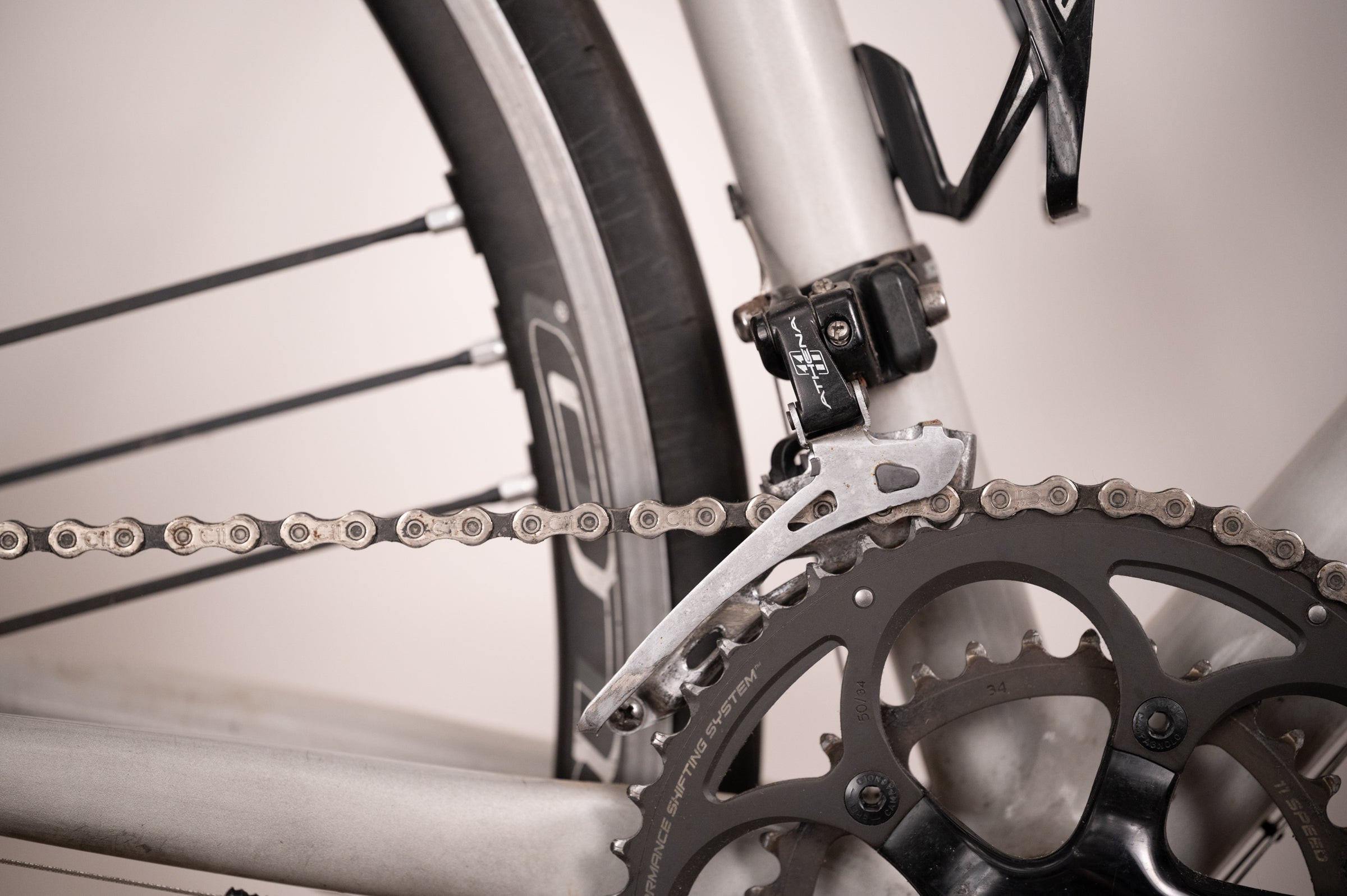 Campagnolo Athena 11-speed mechanical groupset
Campagnolo Athena 11-speed mechanical groupset
Counterpoint: Mechanical Shifting’s Enduring Reliability
Written by Velo tech editor Alvin Holbrook
If we’re discussing bikes as tools, let’s consider real-world utility. My first paid job involved bike delivery and bike repair at a shop called Edible Pedal. The delivery bike was a robust orange Gazelle, designed for upright riding and equipped with a massive insulated box. Despite daily abuse and heavy loads, this bike, with its simple mechanical seven-speed Shimano drivetrain and drum brakes, never encountered any mechanical issues.
While Josh’s “bike as a tool” concept is different from this utilitarian delivery bike, the Gazelle exemplifies the advantages of mechanical simplicity. It required no charging, and minor impacts were easily addressed with a quick barrel adjuster tweak. Through years of hard use in all weather, it remained reliable. I wouldn’t be surprised if it’s still in service today.
Mechanical shifting was more than adequate for this demanding application. And the reality is, mechanical shifting continues to improve. Riders who haven’t experienced modern mechanical systems are missing out.
The latest Shimano GRX mechanical groupset exemplifies this progress. While the shift lever action remains familiar, advancements in cassette and chain technology have significantly enhanced performance. Shifting is now quick, precise, and consistent, rivaling electronic Di2 systems. After a year of consistent use, my GRX mechanical groupset required zero adjustments.
Similarly, the SRAM Apex XPLR mechanical group on a Specialized Crux DSW impressed me. It offered comparable gearing to electronic counterparts and excellent braking. Its iteration of SRAM DoubleTap mechanical shifting was particularly noteworthy – lighter lever effort, yet fast, precise, and consistent. Setup was followed by complete maintenance-free performance.
I understand the arguments against mechanical drivetrains, especially in harsh climates where water and grit can affect cable performance. Modern internal cable routing, while aesthetically clean, can introduce tight bends that compromise mechanical shifting feel. Accessibility needs might also favor the push-button simplicity of electronic shifting. For these situations, electronic shifting is a valuable option.
However, the long-term durability of expensive electronic derailleurs remains a question. While the original Shimano Dura-Ace Di2 7970 from 2009 still functions (assuming no corrosion in junction boxes, cables, and connectors), mechanical systems have a proven track record of longevity.
A simple cable replacement can rejuvenate an older Dura-Ace 7900 mechanical groupset, making it feel and perform like new, with readily available and affordable parts.
Mechanical shifting continues to evolve and consistently performs. Its long-term reliability is well-established. The enduring future of electronic shifting is less certain.
